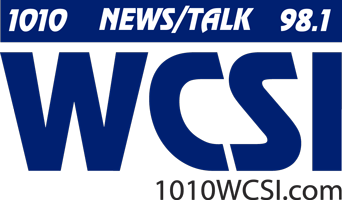Small, but Mighty…
September 24th was “Punctuation Day to draw attention to those 13 marks and symbols that keep our printed thoughts from running altogether.
I stumbled across a National Punctuation Day piece on-line that went into great detail about this bakers’ dozen of writing cops.
Punctuation marks make reading so much easier, if we remember what they mean.
In radio, I have to be careful to observe punctuation marks and react to them properly so a listener can understand the thought or concept better.
Let’s take ’em alphabetically.
(‘) Apostrophe
To indicate the omission of one or more letters in a word or to indicate the possessive case or plurals of abbreviations and symbols.
Warning!
Apostrophes SHOULD NOT be used for possessive pronouns or for noun plurals.
([ ]) Brackets
You can use brackets to include explanatory words or phrases within quoted language.
‘John Foster, creator of the Johnny-on-the-Spot blog said editor Frank Stumbo [of the Madison Tribune] was the individual who encouraged the writer to create a weekly column.’
( : ) Colon
I am not drinking that gross liquid so the doctor can use that scope to peer inside my backside.
What?
We’re not talking about that colon?
Never mind.
This one is used to mark a major division in a sentence to indicate that what follows is an elaboration of what precedes. We also use it to seperate hours from minutes.
Put a “g and an “e” on either side of the “n” and you have something that smells “mighty purdy”.
(,) Comma
If you think it’s just an insignificant smudged dot on the paper, it is used to indicate a division in a sentence, to separate items in a list or to mark off thousands in numerals.
Comma is not a medical condition.
( _ ) Dash
The dash is used to note a break, pause, or hesitation, to indicate omission of letters or words or separate elements of a sentence or series of sentences.
It can also be a small amount of something in a recipe.
It’s bigger than a pinch.
(…) Ellipsis
Not something involving the sun and moon, the ellipsis is 3 evenly spaced dots (periods) indicating the omission of letters or words.
If the omission comes at the end of a sentence, the ellipsis will be is placed after the period, making a grand total of 4 dots.
No more.
No less.
(!) Exclamation Point
This is the sign you use to indicate strong emotion or astonishment or to indicate a command.
AVOID OVERUSE!
F. Scott Fitzgerald, “Cut out all those exclamation marks. An explanation mark is like laughing at your own jokes.”
(-) Hyphen
The hyphen looks a lot like a dash but it is a short line to connect parts of compound word or the parts of a word divided for any purpose.
Hyphens are joiners and can help us avoid ambiguity and should not be used with the adverb “very” and other adverbs ending in “ly”.
(I still think it sounds like a small Middle Eastern nation).
( ( ) ) Parentheses
You use them to include material that you want to de-emphasize or that wouldn’t normally fit into the flow of your text but you want to include nonetheless.
It is not a detailed writing about the reasons one would decide to raise children.
(.) Period.
It indicates a full pause, or stop at the end of a complete sentence. It’s used to mark the end of a declarative sentence or to indicate an abbreviation.
It’s small but very powerful and I remember in high school, if a girl missed one, everybody was whispering and giggling.
( ? ) Question mark.
It’s simply a mark indicating a question.
I kid you not.
To emphasize the point, I might write “?.”
Seems fairly straight-forward to me.
Any questions?
( ” ” ) Quotation Mark
Direct quotations are another person’s exact words incorporated into your own writing and these marks indicate the beginning and end of the quotation.
“I said it.” he said.
( ; ) Semicolon
It has nothing to do with large, 18-wheeled trucks or half of an intestinal surgical procedure.
It is the punctuation mark used to indicate a major division in a sentence where a more distinct separation is felt between clauses or items in a list that is indicated by a comma.
It’s like a comma on steroids.
Actually, you should use a semicolon only where you could also use a period.
EXCEPT!
When you’re punctuating a list or series of elements which contains an internal comma.
Clear as mud, right?
Lewis Thomas wrote, “Sometimes you get a glimpse of a semicolon coming, a few lines farther on, and it is like climbing a steep path through woods and seeing a wooden bench just at a bend in the road ahead, a place where you can expect to sit for a moment, catching your breath.”
Well said.
There are the 13 punctuation marks we celebrate every September 24th.
In Roman times, authors did not punctuate their writings. The marking of pauses in a copy or text was normally left to the individual reader.
I have a Facebook friend and texter who types like that, with no breaks or markings and I find it challenging to read those messages.
Maybe his real name is Augustus.
I think George Prentice summed all this up quite nicely.
“Many writers profess great exactness in punctuation, who never yet made a point.”
